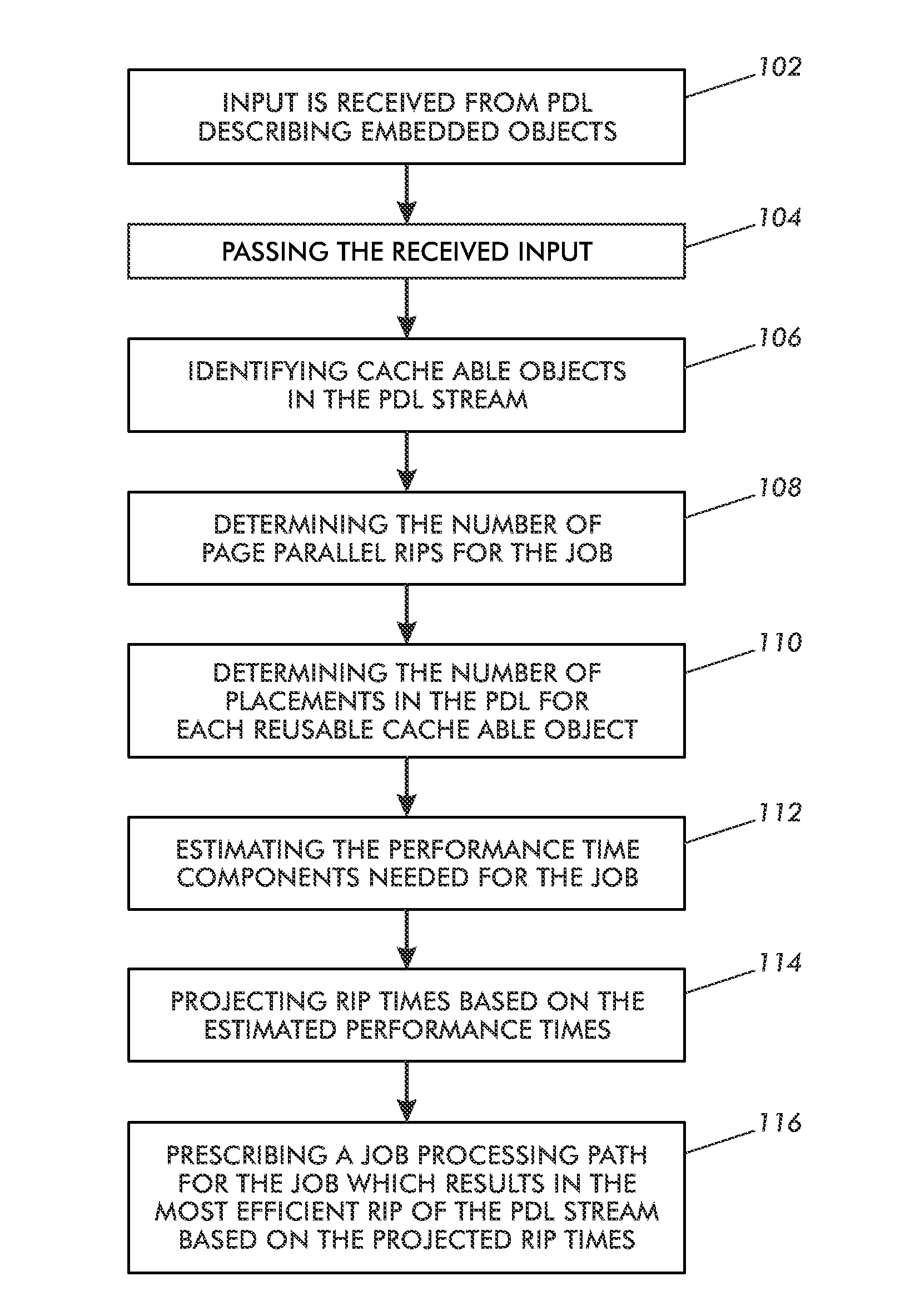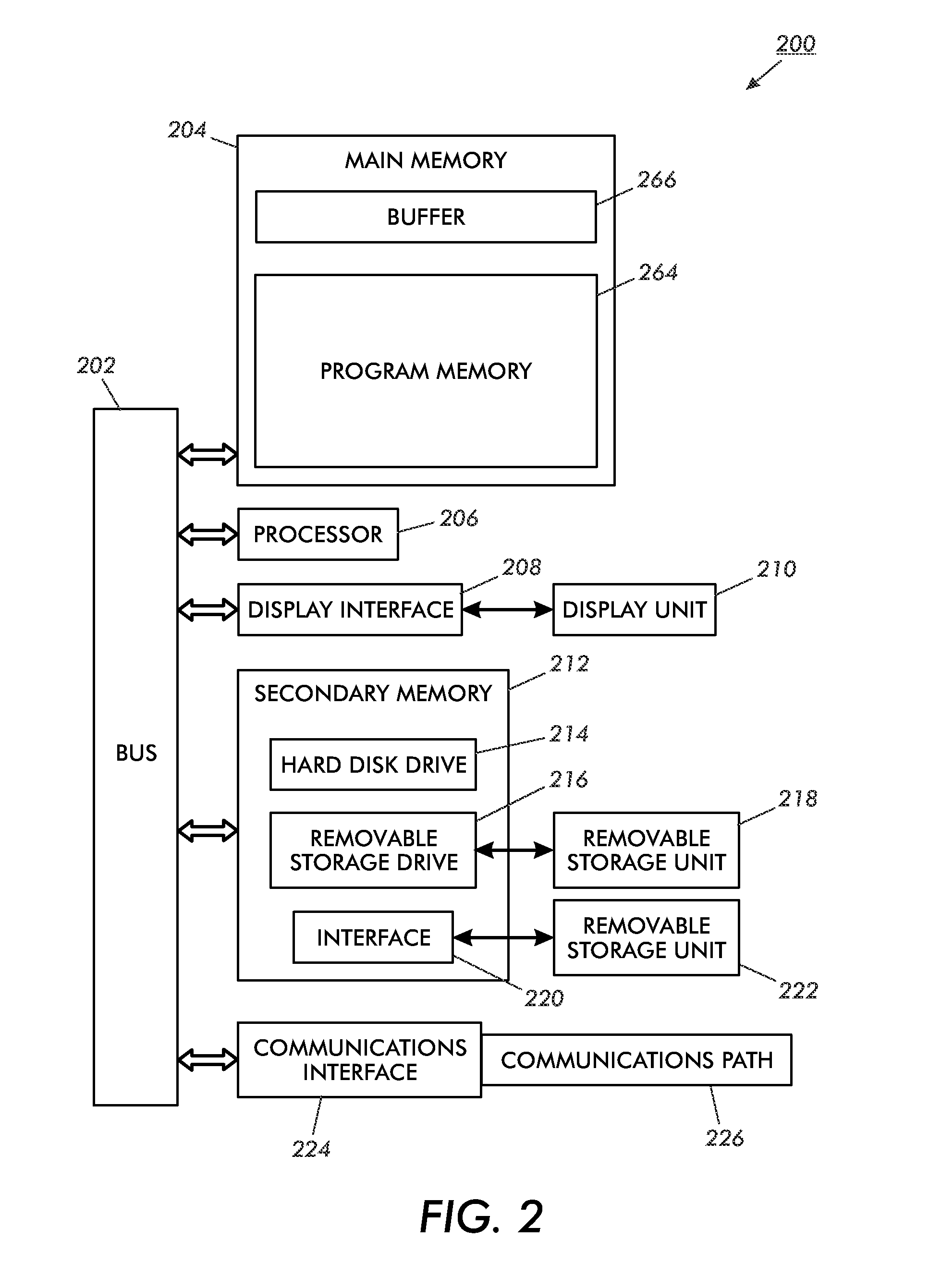Page parallel rip and cache tuning for page description languages
a page description and cache tuning technology, applied in the direction of general purpose stored program computers, instruments, architectures with multiple processing units, etc., can solve the problems of slowing down the ability of the print engine to print data at full-rated speed, the print engine cannot receive data as fast as it can print, and the printer can be clogged
- Summary
- Abstract
- Description
- Claims
- Application Information
AI Technical Summary
Benefits of technology
Problems solved by technology
Method used
Image
Examples
Embodiment Construction
[0019]What is provided are a system and method for cache tuning for print-job environments utilizing complex settings described in a page description language.
[0020]It should be understood that one of ordinary skill in this art would be readily familiar with many facets of document processing in a print job or copy job environment, such as raster image processing, page parallel rip, page description language, embedded objects, reusable document components, portable document format, and the like, and be readily familiar with the other terms herein. One of ordinary skill in this art would also be knowledgeable about software and programming sufficient to implement the functionality and capabilities described herein in their own job processing environments without undue experimentation.
[0021]As used herein, a Page Description Language (PDL) is a language which describes the appearance of a printed page. A Reusable Document Component (RDC) is a form specified object within the PDL that ...
PUM
 Login to View More
Login to View More Abstract
Description
Claims
Application Information
 Login to View More
Login to View More - R&D
- Intellectual Property
- Life Sciences
- Materials
- Tech Scout
- Unparalleled Data Quality
- Higher Quality Content
- 60% Fewer Hallucinations
Browse by: Latest US Patents, China's latest patents, Technical Efficacy Thesaurus, Application Domain, Technology Topic, Popular Technical Reports.
© 2025 PatSnap. All rights reserved.Legal|Privacy policy|Modern Slavery Act Transparency Statement|Sitemap|About US| Contact US: help@patsnap.com



